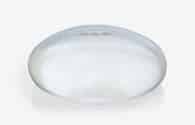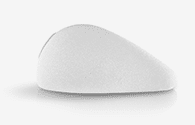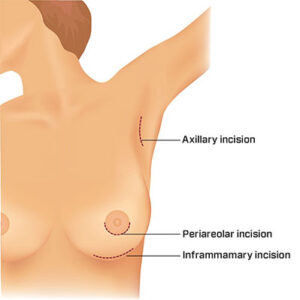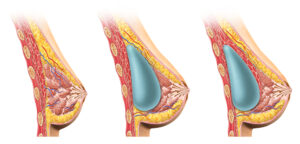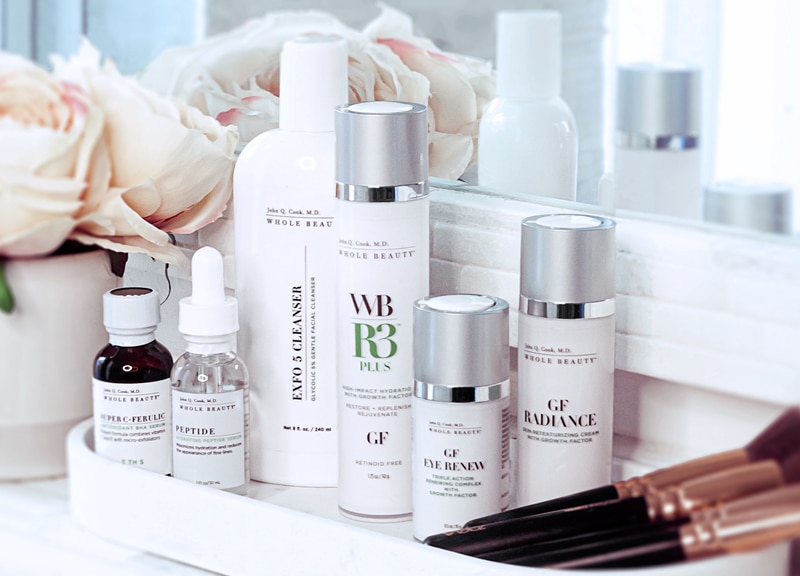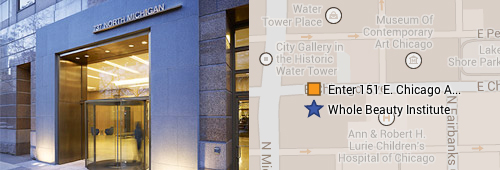Why Dr. John Q. Cook Is the Right Breast Surgeon for You
Dr. Cook has extensive experience in breast augmentation and has performed thousands of operations with breast implants.
Dr. Cook provides an individualized analysis of each patient. He considers your breast structure, your goals, and your lifestyle to find the best solution for you.
We offer our patients anatomical breast sizers and simulation software to help you visualize your potential results.
Dr. Cook’s experience with complex breast surgery provides him with a wide range of technical refinements to optimize results for his breast augmentation patients.
Education and Credentials

Awards and Recognition

REAL PATIENT RESULTS
See the difference experience makes. Scroll through before and afters in the photo carousel of breast implant patients treated by Dr. Cook and his team.
Breast Implants
Confidently Choose Your Shape, Size, Style and More for Augmentation in Chicago and Winnetka
Many patients who come to the Whole Beauty® Institute for a breast augmentation consultation admit that they feel overwhelmed by their range of choices in breast implants. Chicago-based plastic surgeon Dr. John Q. Cook understands that a vital aspect of his work—knowing the advantages and disadvantages of the different types of breast implants available, as well as surgical details—is not common knowledge. He also provides assurance to patients who are confused or anxious due the number of possibilities and choices they have to make: You are not expected to be a “breast implant expert.”
Dr. Cook will draw on his decades of experience to explain the available breast implant options, as well as guide you toward the best selections for your height, weight, current breast size, desired breast size and shape, and other cosmetic goals. The ultimate choice is still yours, but Dr. Cook’s goal is to work closely with you to give you the knowledge you need to make a confident decision and be happy with your results.

Contact Whole Beauty® Institute in Chicago or Winnetka for more information about breast implant cost, variations, and other details. Call 312-751-2112 or send a message online.
Request a consultHave You Been Intimidated by the Process of How to Choose the Best Breast Implants for You?
Perhaps you already had a consultation with a plastic surgeon who said something like, “A 300 cc implant will work just fine.” It would be totally understandable if you left the office wondering what exactly that means—and, more importantly, how those numbers and letters would ultimately make your breasts look.
First, it’s important to understand that the same implant will have very different effects in different types of breasts. That’s why Dr. Cook put together a program to help patients visualize their goals for breast surgery, and to select the ideal size, shape, projection, and more for meeting those goals.
We Have Six Ways to Help You Make a Breast Implant Decision
Every augmentation procedure begins with a consultation. Dr. Cook meets with patients who want larger breasts—or improved shape or symmetry via breast implants—and thoroughly answers their questions. He also leads augmentation patients through six steps designed to make the process run as smoothly as possible and yield beautiful results.
Read More...
Step 1: A DETAILED CONSIDERATION OF YOUR GOALS
This step is too often neglected in breast augmentation consults. Enhancement is not just a matter of going from one cup size to another. Over the years, I have discovered that more than half of the patients who come to me for augmentation surgery want to correct issues relating to asymmetry, volume balance, breast shape, breast projection, and the relationship of their breasts to the rest of their body. A thorough consultation should also cover lifestyle, activity levels, and plans for future pregnancies. When we thoroughly discuss these issues, I can be of best service to my patients.
Step 2: CAREFUL DIMENSIONAL PLANNING
After our conversation to assess your goals, I perform a detailed analysis of the dimensions of your breasts. The measurements I obtain are important to both of us because they allow me to narrow the focus to a range of breast implants that will meet your goals, but also respect your natural breast structure. As a general rule, a respect for the natural dimensions of your breasts is the key to obtaining a result that does not appear to be surgically created. This is because, for some patients, Mother Nature may have been unkind. One example would be a patient with very narrow breasts on a wide torso. In this case, we will go beyond what nature has given us and intentionally alter fundamental breast dimensions, but always with the goal of maximizing the natural look of the result.
Step 3: HELP VISUALIZING YOUR OWN BREASTS
We have an advanced digital photography system, so that as soon as I photograph your breasts, the image is transferred to a monitor in the exam room. This enables us to further the discussion and address subtle issues of breast form, structure, and symmetry when deciding on breast implant specifics. This process is much more helpful than just looking at your breasts in the mirror, because it enables you to step away from yourself and visualize your breasts in a more accurate manner.
Step 4: A BETTER SENSE OF RESULTS WITH CUSTOM BREAST SIZERS
Once we determine a recommended range of implant sizes, the next step is to give you a reasonable approximation of the effect these implants will have on your breasts. A common practice for many surgeons is to give you an implant of the specific size, which you place inside your bra. Unfortunately, this does not do a very good job of approximating what the implant will actually do when it is under your breast—especially if the implant is to be placed under the muscle. We help our patients to visualize the results of breast implant surgery through the use of custom breast sizers. These curved shells are the product of careful study into what a given size breast implant does to the actual shape of the breast. You will place a pair of these sizers on your breasts and hold them in place with a stretch bra. This process provides a much better simulation of the results of breast enhancement than any method we have used before. In my opinion, sizers are more helpful than even 3D imaging, because you can actually experience how your breasts will look in the real world. You can also see how your new breasts will look in clothing, which is an important consideration.
Step 5: 3D SIMULATION OF YOUR BREASTS WITH DIFFERENT SIZE IMPLANTS
There are several 3D systems that provide an approximation of how your breasts will look with various sizes and shapes of implants. This information presented this way can be helpful for some patients, but it is important to remember that this is only a computer simulation. None of the current software, in my opinion, is completely reliable in predicting breast shape. As long as you keep these limitations in mind, 3D simulation is one more piece of data that will help you make an informed decision. Most of our patients tell us that the custom breast sizers are more helpful than 3D imaging when it comes to actually getting a realistic sense of the effects of breast implants.
Step 6: A LARGE COLLECTION OF BREAST PICTURES (THANKS TO OUR PATIENTS)
Many of our patients have generously given us permission to use their before-and-after pictures for educational purposes. This often allows us to provide you with images of patients who have body types and breast shapes similar to your own. A 300 cc implant in an athletic 23-year-old woman will have a very different effect from a 300 cc implant in a 35-year-old woman who has breastfed three children. If we are able to find pictures that show the results of breast implant surgery in people whose bodies are similar to your own, this can be very helpful.
What Are the Breast Implant Variables to Consider?
There are five main attributes of breast implants and enhancement surgery that Dr. Cook works with patients to understand and decide on: size, material, shape, profile, incisions, and plane.
Breast Implant Choices
Size
Augmentation surgery can be about changing the breasts’ shape, symmetry, and more, but the procedure is called “augmentation” for a reason. Women typically choose breast implants to make their breasts bigger—but exactly how much bigger is an important factor to consider.
Material
Breast implants are silicone shells filled with a material designed to add volume and mimic fat. There are two fillers to choose from: saline and silicone. Furthermore, there are several types of silicone to consider.
Profile
A tall, narrow glass and a shorter, wide one may hold the same amount of water, but they look very different from each other. Breast implants are similar. Profile refers to the width of a breast implant’s base compared to its volume. A high profile 300 cc breast implant will have much more projection than a low-profile 300 cc implant.
Incisions
The size and type of an implant, as well as each patient’s unique anatomy, will determine where the incision needs to be made for insertion. Surgeon and patient preferences will also be weighed.
Plane
A breast implant may be inserted fully above or below the plane of the chest muscle, or can even be partially covered. The various positions have their own benefits and drawbacks to be discussed during a consultation.
Material: What Are Breast Implants Made Of?
Many patients are surprised to learn that both saline and silicone gel breast implants have a silicone component. The outer shell of both types of implants is made of silastic, which is the solid form of the silicone polymer. The difference is what’s inside the implant.
Saline Breast Implants
Saline implants are filled with sterile salt water—the same solution that is delivered in an IV. After Dr. Cook creates a space for the implant, he takes an empty shell, connects sterile tubing to a valve in the front surface of the device, places the implant in its proper location, and fills the shell with salt water.
Advantages & Disadvantages
Advantages of Saline Breast Implants
- They can be inserted through a shorter incision.
- They can be adjusted to a specific volume, within a limited volume range.
- They are less expensive than silicone gel breast implants.
- If they rupture, the resulting leak is easy to detect, since the breast goes “flat.”
- You do not have to worry about theoretical concerns about silicone gel and its effect on the body. The Internet is full of speculation, and if you are the type of person who is easily upset by such things, you may gain peace of mind by selecting saline implants.
- The number one complaint about saline breast implants is that they do not feel as natural as silicone gel implants.
- Saline implants are prone to rippling, which may be visible in certain portions of the breast, especially if you bend forward.
- Some surgeons try to avoid rippling by over-filling implants, but this leads to another problem: an overly firm implant with a ball-like shape.
- There have been reports of saline implants being colonized by bacteria or other microorganisms. I have never encountered this in a single one of my patients, but it is a theoretical concern.
- Some surgeons think that saline implants are less durable than silicone gel implants. It’s very hard to get good data on this.
Disadvantages of Saline Breast Implants
Silicone Breast Implants
Silicone gel implants are filled with a gel-like version of the silicone polymer. This feels much more like a natural breast. All implants currently available in the United States contain what is known as a cohesive gel. This means that the chains of silicone polymer are cross-linked so that they stick together even if the shell of the implant is broken.
Silicone Breast Implants
Silicone gel implants are filled with a gel-like version of the silicone polymer. This feels much more like a natural breast. All implants currently available in the United States contain what is known as a cohesive gel. This means that the chains of silicone polymer are cross-linked so that they stick together even if the shell of the implant is broken.
Advantages & Disadvantages
Advantages of Silicone Gel Breast Implants
- Silicone gel implants have a more natural “feel” when compared to saline implants. This advantage is particularly important for patients with limited natural breast volume, since there is less “covering” to camouflage the implants.
- Silicone gel implants are less likely to ripple than saline implants.
- It is now possible to select silicone gel implants with different degrees of cohesivity to the gel. This influences breast shape and the degree of fullness in the upper portion of the breast as well as the general “feel” of the breast.
Disadvantages of Silicone Gel Breast Implants
- Silicone gel implants require a longer incision for insertion than do saline implants of the same size.
- Silicone gel implants are more expensive than saline breast implants.
- A break in the shell of a silicone gel implant is sometimes harder to detect than shell breakage of a saline implant.
- There will always be speculation about possible ill effects of silicone gel implants, even though a large number of studies have shown no connection between breast implants and health problems. If you are inclined to worry about this type of speculation, saline implants may be a better choice.
Form Stable Breast Implants
Implants that are known as form-stable or “gummy bear” implants are available from all major implant manufacturers. These breast implants have different degrees of cohesion (stickiness), which provides better control of breast shape.
Advantages & Disadvantages
Advantages of Form Stable Breast Implants
- As with regular silicone implants, many women believe form-stable gel mimics the feel of natural fat better than saline does.
- Also like regular silicone, rippling is less of a concern with gummy bear breast implants.
- Form-stable silicone used to be available in only anatomic-shaped implants with a rough surface texture, but now comes in round breast implants with a smooth surface as well.
Disadvantages of Form Stable Implants
- Because of form-stable silicone implants’ size, shape, and solidity, there are fewer incision options available for women choosing them.
- Gummy bear implants cost more than saline devices.
- Since form-stable silicone is designed not to leak out like salt water, it may be harder to tell if there has been a rupture of the implant shell.
What I Have Learned From My Patients and the Choices They Make
More than 95 percent of my patients who undergo augmentation surgery or breast reconstruction surgery opt for silicone gel implants. My patients tend to place a premium on obtaining the most natural-looking and -feeling results possible. They are willing to tolerate the increased expense and longer incisions that come with silicone gel breast implants in return for a softer breast that is less likely to reveal rippling from the implant. That said, the vast majority of my patients maintain a high degree of satisfaction with the surgical result, whether they choose saline or silicone gel breast implants.
Profile: How Much Will a Breast Implant Project Outward?
The profile of a breast implant refers to how wide the base of the implant is for a given volume. As a general rule, it is wise to consider the natural base width of your breast and choose an implant that will fit inside this dimension. This will lead to the most natural result and avoid a situation where the implant creeps out past the side of the breast, which can lead to a visible implant edge.
As with any generalization, there are exceptions to this rule, however. Some women have breasts that have unusually narrow bases, in which case it is artistically desirable to enlarge the base dimension of the breast with a wider based implant. This can be accomplished with relatively advanced techniques that will enable a release of the base of the breast and proper camouflage of the implant.
Consider three implants with the same volume that have different base widths.
From left to right, low profile implant, medium profile implant, high profile implant.
The implant on the left is a low-profile device. It is more spread out and doesn’t project as far forward as a higher-profile device. The implant on the right is a high profile device, which means that it has a relatively narrow base for its volume and tends to thrust forward to a greater degree. The implant in the middle is a medium profile device.
Read More...
High-Profile Breast Implants
A high-profile implant allows the maximum volume while respecting the breast base width. There will also be a greater degree of fullness in the upper portion of the breast. Since I am a naturalist, I generally prefer a breast that is not overly full in its upper portion—but there are some patients who desire this look. If you opt for a high-profile implant, I would generally recommend that the implant be positioned under the pec muscle, as this will soften the transition at the upper portion of the breast. If you have quite a bit of natural breast tissue in the upper breast and you desire a full look, you may want to consider a high-profile implant on top of the muscle. For patients who have very little natural structure in the upper part of the breast, I recommend against placing the implant above the muscle, as this will create very abrupt transition.
High-profile implants can be very useful for breast reconstruction. Under these circumstances I usually combine these implants with a procedure to give a natural curvature to the lower pole of the breast, along with fat transfer to soften the transition in the upper portion of the breast.
Intermediate-Profile Breast Implants
The majority of my patients choose intermediate-profile breast implants for their augmentation surgery. This reflects the taste of the patients who come to see me, as they tend to place a priority on obtaining a natural-looking result. Mediumprofile breast implants fill out the breast well, but don’t create an “overdone” look, especially when they are placed under the pec muscle.
Low-Profile Breast Implants
These are implants that have a relatively wide base for their volume. This means that the implant will not thrust as far forward as the equivalent-volume higherprofile implant.
I have found lower-profile breast implants to be particularly helpful for patients who have a relatively wide natural breast base, but who do not want to add a lot of volume to their breasts. In these cases, intermediate or high-profile implants would be too narrow for the breast and would not fill it out properly. A lower-profile implant’s wider base would create a better balance.
A Careful Analysis of Your Goals and Preferences Is Key to Obtaining an Excellent Long- Term Result
In my practice, we emphasize the importance of understanding your taste and preferences. This understanding, combined with a careful dimensional analysis of your breasts’ structure and form, allows us to tailor our recommendation to your needs. The availability of breast implants with a variety of projections and shapes has been helpful to this process.
Incisions: How Will the Breast Implants Be Inserted?
Some surgeons rather dogmatically insist that there is only one “good” incision choice, so they use it for all of their breast implant procedures. A better approach is to consider each patient’s individual needs and preferences.
In other words, there is no one incision that works for all augmentation patients, but the right one is the incision that will work best for you. The Whole Beauty® Institute’s consultation process is designed to help you make choices that will help determine which incision would be most appropriate. A careful discussion of your healing history, activity patterns, aesthetic preferences, and goals, as well as a careful dimensional analysis of your breasts, will guide us to the incision that best meets your needs.
Inframammary Incision
The inframammary approach to augmentation surgery involves a short incision that runs within the natural fold under the breast. This approach offers direct access to the subglandular, subpectoral, and subfascial planes.
Read More...
The inframammary approach offers direct access to the subglandular, subpectoral, and subfascial planes, which are the three locations where a breast implant can be placed. If a particular patient’s breast implant surgery requires advanced techniques—such as repositioning the pectoral muscle, releasing a tight lower breast structure, or anchoring the fold—the inframammary incision gives the best access and allows for precision.
Another advantage of this approach is that there is minimal disruption of the breast structure. There is some evidence that this may help to diminish the likelihood of capsular contracture.
If it heals well, the inframammary incision results in what could be considered the least conspicuous scar. The breast fold is, after all, a natural crease. If you have a relatively light complexion and do not have any personal or family tendency to form thick scars, this can be a good choice for you.
If you have a relatively mature breast structure with a well-defined fold and a little overhang of the fold, the inframammary approach tends to work very well. You may want to discuss other possible incisions If you like to wear very small swimsuit tops that tend to ride up above the lower edge of the breast, if you enjoy topless sunbathing, if you lack a well-defined fold under your breasts, or if you are of African, Southern Mediterranean, or Asian ancestry and you have a likelihood of forming thicker scars.
Note that if an augmentation plan includes adjusting the position of the fold under the breast, Dr. Cook will locate the incision at the level of the new fold. One example of this would be a patient with a relatively high fold who desires an implant with a larger base dimension. In order to avoid creating a “top heavy” breast, the level of the fold must be reestablished at a lower position, so that the implant is nicely centered on the breast.
Periareolar Incision
In general, the areola—which is the technical name for the colored zone that surrounds the nipple—is a privileged area for surgical incisions. It is extremely rare for an incision placed carefully along the border of the areola to heal with a thick scar. For this reason, you may want to consider the periareolar approach if you have an ancestry that makes it more likely you will form thicker scars (e.g., African, Asian, Southern Mediterranean). This is especially true if you or someone in your family has ever developed a thick scar or a very dark scar.
Read More...
By far the simplest approach for a breast implant procedure is for a surgeon to cut straight down through the breast tissue after making the surgical incision. This can potentially speed the operation, but there may be disadvantages. First of all, if a surgeon cuts through breast structures, the breast implant will be exposed to bacteria that live in the breast ducts. We know that there is a greater risk of capsular contracture when implants are exposed to such bacteria. A second disadvantage is that when breast structure is cut, there may be confusing changes on mammograms.
When Dr. Cook uses a periareolar incision for breast implant surgery, he takes a different approach, which is a little more complex—but which is also better for his patients. Rather than cutting the breast structure, he opens up the natural plane under the skin and above the breast structure. He follows this curve down to the lower edge of the breast, then passes under the breast. From that point in the operation, he proceeds just like he would with an augmentation done via the inframammary approach. It seems to be common sense that keeping the breast structure intact and leaving the ducts alone is worth it.
From the standpoint of periareolar incisions, it is best to have a well-defined areolar border, since this hides the scar nicely. If the areolar border is less distinct—which is the case in 20 to 25 percent of patients—the scar will be more conspicuous.
Note that if you are planning to breastfeed, there is some evidence that a periareolar incision may be more likely to interfere with lactation than an inframammary incision. Even though the evidence about this is not definitive, it might make sense to avoid a periareolar incision if the ability to breastfeed is a priority for you.
Also, some areolae are not large enough to allow for the placement of a breast implant—at least through the standard periareolar incision, which runs along the lower edge of the areola, from the 3 o’clock to the 9 o’clock position. One possibility is to extend the incision into the adjacent skin of the breast, but this may make the scar more noticeable. The other possibility is to encircle the entire areola with the incision and release the skin that surrounds the area, but this can have its disadvantages as well.
Another concern with the periareolar approach is the possibility of a greater likelihood of capsular contracture—a tightening of scar tissue around the implant, which can distort the shape of the breast and produce an undesirable firmness.
Periareolar Incision
In general, the areola—which is the technical name for the colored zone that surrounds the nipple—is a privileged area for surgical incisions. It is extremely rare for an incision placed carefully along the border of the areola to heal with a thick scar. For this reason, you may want to consider the periareolar approach if you have an ancestry that makes it more likely you will form thicker scars (e.g., African, Asian, Southern Mediterranean). This is especially true if you or someone in your family has ever developed a thick scar or a very dark scar.
Read More...
By far the simplest approach for a breast implant procedure is for a surgeon to cut straight down through the breast tissue after making the surgical incision. This can potentially speed the operation, but there may be disadvantages. First of all, if a surgeon cuts through breast structures, the breast implant will be exposed to bacteria that live in the breast ducts. We know that there is a greater risk of capsular contracture when implants are exposed to such bacteria. A second disadvantage is that when breast structure is cut, there may be confusing changes on mammograms.
When Dr. Cook uses a periareolar incision for breast implant surgery, he takes a different approach, which is a little more complex—but which is also better for his patients. Rather than cutting the breast structure, he opens up the natural plane under the skin and above the breast structure. He follows this curve down to the lower edge of the breast, then passes under the breast. From that point in the operation, he proceeds just like he would with an augmentation done via the inframammary approach. It seems to be common sense that keeping the breast structure intact and leaving the ducts alone is worth it.
From the standpoint of periareolar incisions, it is best to have a well-defined areolar border, since this hides the scar nicely. If the areolar border is less distinct—which is the case in 20 to 25 percent of patients—the scar will be more conspicuous.
Note that if you are planning to breastfeed, there is some evidence that a periareolar incision may be more likely to interfere with lactation than an inframammary incision. Even though the evidence about this is not definitive, it might make sense to avoid a periareolar incision if the ability to breastfeed is a priority for you.
Also, some areolae are not large enough to allow for the placement of a breast implant—at least through the standard periareolar incision, which runs along the lower edge of the areola, from the 3 o’clock to the 9 o’clock position. One possibility is to extend the incision into the adjacent skin of the breast, but this may make the scar more noticeable. The other possibility is to encircle the entire areola with the incision and release the skin that surrounds the area, but this can have its disadvantages as well.
Another concern with the periareolar approach is the possibility of a greater likelihood of capsular contracture—a tightening of scar tissue around the implant, which can distort the shape of the breast and produce an undesirable firmness.
Axillary Incision
The main appeal of the axillary (underarm) approach to augmentation is that it keeps any scarring off of the breast itself. This may appeal to a patient who wants to be very discreet about her decision to have breast implants. No matter how well the body heals, an incision in the fold under the breast or at the areolar border will leave some trace of its presence. Of course, this is equally true of an incision under the arm, but some patients like the fact that this incision is not on the breast.
Read More...
If you have the type of skin that heals well and you are very concerned about having a scar anywhere on your breast, the axillary approach may be a good choice for you. This may be particularly true if you have very small breasts that lack a well-defined natural fold.
So-called “blind” axillary augmentations rely on relatively crude instruments to create the pocket for the breast implant and don’t allow for accuracy. When Dr. Cook performs axillary breast implant surgery, he always makes use of an endoscopic system in order to increase the accuracy of his work in the lower portion of the breast.
If you are of an ancestry that makes it more likely you will have a thick or dark scar, remember that the axillary location is not particularly ideal in terms of healing. Only the periareolar incision can make this claim. Remember that the inframammary and periareolar incisions will be hidden by clothing and swimsuits, while the area under the arm is not. As a consequence, if an axillary incision doesn’t heal well, it will be visible every time you raise your arms.
A significant percentage of Dr. Cook’s patients require sophisticated technical maneuvers in order to achieve the best surgical result. These are usually best accomplished via an inframammary incision.
Plane: Where Will the Breast Implants Sit in the Chest?
A breast implant is inserted into a pocket, where the intent is for it to sit securely while being able to move naturally so that it adds volume without appearing obvious. The “level” or plane where this breast implant pocket is made can impact results. Submuscular augmentation involves the breast implant sitting beneath the pec muscle, subglandular augmentation involves the breast implant filling a space under the breast structure but above the pec muscle, and subfascial augmentation involves the breast implant being inserted underneath the fascia that sits on top of the pec muscle. There is also the possibility of combining planes so that the top part of the breast implant is under the pec muscle and the bottom part is under the breast.
Subpectoral Breast Implants
The subpectoral plane is the most common choice for Dr. Cook’s breast implant patients, because of several distinct advantages. The anatomy of the pectoral muscle varies from person to person, but for most people its bottom edge lies near or just above the natural fold under the breast. During an augmentation procedure, Dr. Cook opens up the natural space under the pec muscle and releases the attachments of the lower edge of the muscle to the underlying ribs. This maneuver avoids the situation where contractions of the pec muscle push the breast implant up toward the collarbone so that the breast implant sits too high relative to the breast.
Read More...
One question that often comes up in consultations for breast implants is whether the release of the lower edge of the pec muscle affects muscle function. This is especially important to patients who are very athletic. Fortunately, pec function remains the same after release of the muscle edge.
There is, however, one issue that patients who are to undergo subpectoral augmentation should be aware of: When the pec muscle contracts, the breast will move. For most patients, this one issue is outweighed by the advantages of having the breast implant under the muscle:
- Subpectoral breast implants have a natural slope in the upper portion of the breast. For patients who want to avoid the top-heavy obviously augmented look that is all to common, subpectoral augmentation is a good choice.
- It is easier to get good quality mammograms when the breast implant is beneath the pectoral muscle than when breast implants are just under the breast structure.
- Particularly in thinner patients with a modest amount of natural breast structure, subpectoral placement helps to camouflage any imperfections in the breast implants and provides a more natural “feel” to the breast.
- There is some evidence that submuscular breast implants have a lower likelihood of developing capsular contracture (hardening) than subglandular breast implants.
Subpectoral breast implants also have some disadvantages when compared to subglandular implants:
- The surgery takes a little longer and requires more skill. This should not be an issue if your surgeon is certified by the American Board of Plastic Surgery and is an experienced breast surgeon, such as Dr. Cook.
- For the first few days after augmentation surgery with subpectoral breasts implants, you will be more uncomfortable than if you had implants placed in the subglandular plane.
- When you contract your pec muscles, such as when doing a bench press or pushing down on the edge of a swimming pool to bring yourself out of the water, your breasts will move. As a practical measure, most patients don’t find this to be an issue. It might be a concern if you are a competitive body builder.
- If you have very well-developed pec muscles, there may be technical challenges in obtaining a nice breast shape.
Subglandular Breast Implants
Some women desire breasts that are particularly full in their upper portion and in the cleavage area. This can be accomplished by inserting the breast implants in the plane immediately under the breast. The subglandular plane tends to maximize the forward thrust of the breast implants. From an aesthetic standpoint, this can work well if you have enough natural breast structure in the upper part of the breast. A decent amount of your own tissue will help to camouflage the upper edge of the breast implant and avoid an obvious transition in the upper breast that can be a telltale sign of augmentation surgery.
Read More...
A large percentage of patients who come to Dr. Cook for revisional surgery after getting breast implants have their implants positioned in the subglandular plane. A less–than-ideal outcome from subglandular breast implants is often associated with two specific situations:
- When the breast implants are very large, especially if they are filled with saline.
- When the breast implants are placed in a patient with thin natural breast tissue in the upper part of the breast.
It mystifies Dr. Cook why some doctors force very large, saline-filled breast implants into the subglandular plane. These breasts do not look or feel natural and often develop problems over time. Very large subglandular breast implants follow a predictable course: The weight of the breast implants stretches the lower part of the breast and leads to early drooping that only gets worse over time. The mechanical force of the breast implants leads to a thinning out of the remaining breast tissue, so that there is very little left to camouflage the breast implants.
This is particularly unfortunate with saline breast implants, since there will be rippling and irregularities. Surgery to revise this situation, while usually possible, can often be complex and expensive. If you lack sufficient thickness in the upper portion of the breast, it is usually best to avoid subglandular breast implants. Such a placement thrusts the breast implants forward off the chest in a very unnatural way. A soft look is a natural look.
Dr. Cook uses the subglandular plane less frequently than the submuscular plane, and he prefers silicone gel breast implants for most patients. Here are some advantages to the subglandular placement of implants:
- For patients who have enough breast structure in the upper portion of the breast and who want a full look, the subglandular plane may be a consideration.
- Patients who want to avoid breast motion that occurs when the pec muscles contract might consider subglandular breast implants. Patients who have limited amounts of their own natural breast structure must realize that, for them, subglandular breast implants may have an artificial look. There are strategies that sometimes help these patients, including the placement of breast implants in the subfascial plane, and, with careful discussion, the use of fat transfer to add structure to the upper part of the breast.
- For patients whose breasts are just a little settled or droopy after pregnancy or weight loss, breast implants will provide a limited lift to the breast. This lifting effect is more powerful in the subglandular plane than in the submuscular plane. Another good option is to reposition the lower portion of the pec muscle in a way that preserves muscle coverage in the upper part of the breast implant but allows the implant to sit under the lower part of the breast.
- Subglandular augmentation requires a bit shorter of an operation than submuscular implants and can be carried out with limited anesthesia techniques in the right patients.
- Patients with subglandular breast implants have a less painful and generally easier recovery than patients with submuscular breast implants.
That said, for many women, subglandular breast implants have disadvantages when compared to submuscular breast implants. Unless you have a generous amount of natural structure in the upper portion of your breasts, subglandular implants will cause the upper breast to have a less natural look.
- Subglandular breast implants have a greater likelihood of showing ripples and other irregularities, as well as to have an unnatural feel.
- It may be more difficult to obtain a good quality mammogram when breast implants are in the subglandular plane.
- Some studies suggest that subglandular breast implants are more likely to develop significant capsular contracture than submuscular breast implants.
- Subglandular breast implants are more likely to cause a thinning out of the natural breast structure, especially if they are large.
Subfascial Breast Implants
Subfascial implants may be helpful for women with very specific body types. Like all muscles, the pecs are covered by a thin layer of tissue known as fascia. For trim, athletic patients who do not want to experience the breast motion that occurs with muscle contraction, the subfascial plane may be a worthy consideration. When a breast implant is placed in the subfascial plane, the abrupt transition that occurs at the upper border of the breast implant is softened. This helps to avoid the telltale breast implant “look.” Although this is an improvement over what is seen with subglandular breast implants, the subpectoral plane will provide better camouflage.
One useful strategy is to combine subfascial breast implants and fat transfer in the upper aspect of the breast. Sub-fascial placement of breast implants softens the visual transition at the upper edge of the breast implant, and fat transfer provides greater thickness over the device. It is possible to achieve the visual benefits of this combination with an axillary approach, but the incision needs to be extended in a specific way.
Bi-Planar Breast Implants
A blended approach combines submuscular and subglandular implant placement to provide a modest breast lift. If you have a breast that has settled to a lower position on your body than you would like, but you want to avoid the scars that occur with a lift, a blended plane approach may be helpful.
Dr. Cook realized early in his practice that the pectoral muscle could be shifted under the breast so that it camouflages the upper border of the breast implant, while allowing the implant to fill out the lower portion of the breast. This provides a mild breast lift. He coined the name “pectoral repositioning” to describe this technique, while many plastic surgeons use the term “biplanar augmentation” to describe this approach.
Remember that augmentation surgery will provide a mild degree of breast lift, so a blended bi-planar approach will provide a little more lift. Still, a structural mastopexy or other breast lift technique will provide much more powerful lifting. It all depends on your needs. Dr. Cook will help you determine which of these choices is best for you. As a practical measure, he tends to use a blended approach to augmentation for patients who have experienced a mild degree of breast settling or ptosis after pregnancy or weight loss.
Read More...
Submuscular augmentation in a settled or droopy breast can lead to a double contour. There will be a fullness from the breast implant and a second area of fullness from the breast that hangs off the implant. Needless to say, this is not desirable.
Subglandular augmentation is not restrained by the muscle, so the breast implant does a better job filling out the breast, thereby avoiding the double contour. Unfortunately, subglandular augmentation has its own set of disadvantages.
When the pec muscle is freed from its attachments to the under-surface of the lower breast, it will move to a higher position under the breast. The breast implant is now able to fill out the lower part of the breast as in a subglandular augmentation, but the upper part of the breast implant will be hidden by the pec muscle, so there is a smooth transition in the upper breast.
Bi-planar augmentation is an easy procedure in concept, but it can be difficult for a patient to maintain excellent long-term results.
As a plastic surgeon who does a considerable amount of revisional breast surgery, Dr. Cook has learned much from the patients referred to him, as well as from a critical analysis of his own long-term results. There are some potential disadvantages to the bi-planar approach.
- The natural structure of the lower breast will thin out, especially if larger breast implants are placed, in the same the way it does with big implants in a standard subglandular augmentation.
- It is very important to preserve the natural attachments of the inframammary fold (the fold at the lower edge of the breast). If this is not done, the breast implants tend to drift over time to a position that is too low.
- There can be a tendency for breast implants to stretch out the lower portion of the breast, especially if they are large. This creates too long of a distance between the bottom of the areola and the fold under the breast, so that the nipples ride too high on the breast.
- A little repositioning of the pec can be a good thing, but too much is too much! Dr. Cook has performed revisional surgery on patients whose pec muscle is sitting near the top of the breast. This is possibly due to technical issues with the original surgery.
Bi-planar augmentation can be a helpful technique for patients who have mildly settled breasts after pregnancy, but the long-term results depend on technique.
Three Points of Caution About Choosing Breast Implants Instead of a Lift
Some women who want a change to their silhouette automatically assume that adding volume with breast implants will be the way to go. In some cases, however, their dissatisfaction does not stem from a lack of size, but in the way their breasts sit on their chest. Breast implants will not solve a drooping or sagging problem that stretches the skin and causes the nipples to point downward. In face, adding breast implants to sagging breasts can create new problems.
Problem 1
Natural Breast Tissue Can “Melt” and Reveal Rippling or OtherBreast Implant Irregularities
When a large breast implant is placed in the subglandular plane underneath a relatively small breast, it will exert a pressure on the undersurface of the breast. Very often, this will lead to a thinning out of the natural breast tissue over time. What you are ultimately left with is nothing but skin over a breast implant. Under these circumstances, the breast implant will reveal its imperfections. This is particularly true with saline breast implants.
Since Dr. Cook has a referral practice, he sees a number of patients dealing with this problem every year. The good news is that we now have a number of advanced techniques at our disposal, such a fat transfer, that have enhanced our ability to fix these breasts. That said, it would be much better if the problem were avoided from the onset by better surgical judgment.
Problem 2
Big Breast Implants in Breasts that Have Settled Will Gradually Make the Breasts Droop More
Natural forces have a way of always winning over time. The bigger the breast implant, the more gravity will stretch out the lower pole of the breast. What may look good a month after surgery will gradually stretch. A droopy breast will become a droopier breast with a breast implant, making it look bottom heavy.
Some surgeons try to solve this problem by “revising” the surgery with even bigger breast implants. This will only further aggravate the problem over time.
Problem 3
When a Big Breast Implant Is Placed Under a Droopy Breast with a Narrow Width, the Body May “Remember” the Original Breast Structure and Result In a Double Breast Contour
Dr. Cook does consult with patients who originally had breasts that were relatively narrow in their base width, but that have “settled” over time. An original augmentation surgeon may have tried to “solve” the problem by placing a large, wide breast implant underneath the breast. This can leave the patient with a double contour. The first contour is formed by the breast implant, while the second contour is formed by the original breast. This double contour can be quite frustrating for the patient.
The way to address sagging tissue is by removing excess skin with a breast lift, effectively “pulling up” the breasts so that they sit higher on the chest and point outward instead of downward.

If you would like to have a consultation regarding breast implants in the Chicago area, or if you have questions for our team, please call 312-751-2112 or contact us online.
Request a consult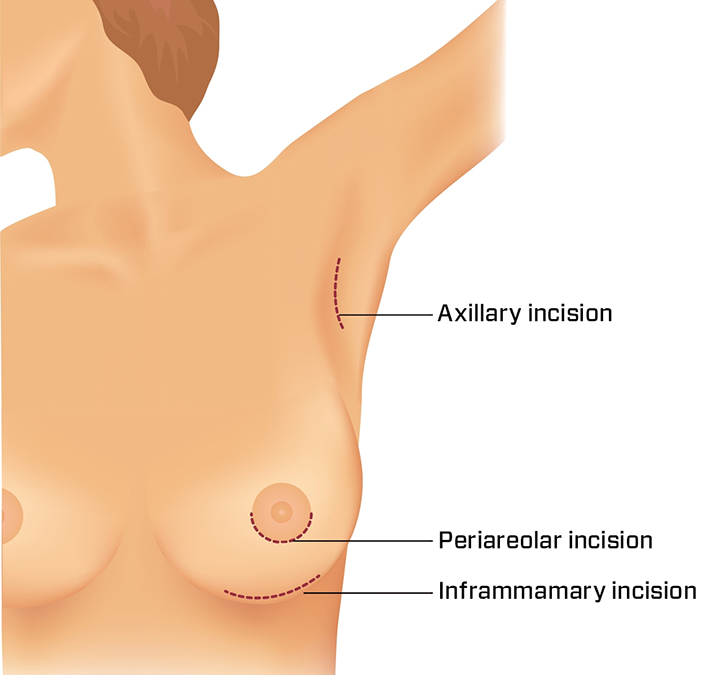
The base of the breast is important in breast implant surgery
The base of the breast is important in breast implant surgery because this will provide you with important information to help you to select an implant that is in harmony with your natural breast structure.
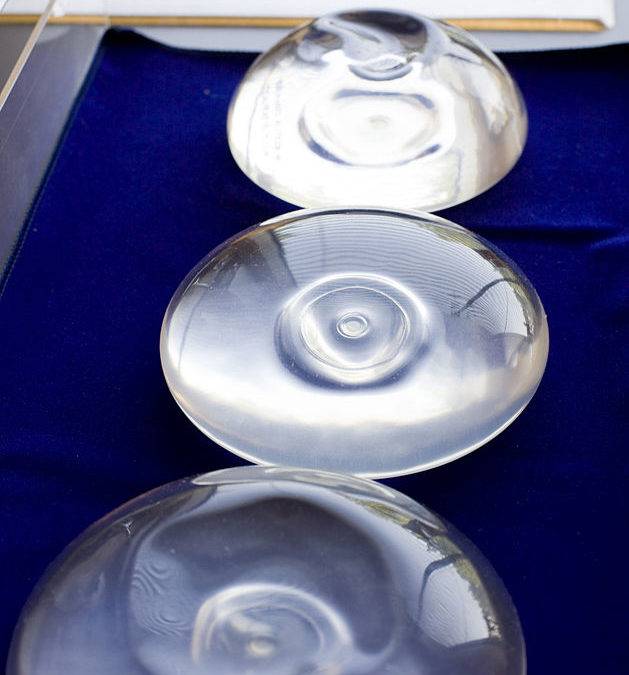
Patient Preference for Silicone Implants
Patients at the Whole Beauty® Institute have a strong preference for silicone gel implants over saline breast implants. In a recent review of our data from the last 2 years we found that 87% of our patients selected silicone gel implants for their breast surgeries performed by Dr. John Q. Cook.
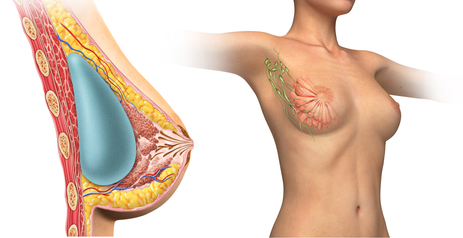
Submuscular vs Subglandular Breast Augmentation
Breast augmentation patients need to choose the location of the breast implant: subglandular – under the breast, or submuscular – under the pectoral muscle.
Dr. Cook's Practice Blog
Explore our practice blog to learn more about non-surgical treatments and plastic surgery procedures available at The Whole Beauty® Institute. Get tips and advice, and discover new ways to improve your health and beauty.
Dr. Cook's HealthGems Blog
Dr. John Q. Cook shares his personal thoughts on well-being, quality of life, and more in HealthGems—from his decades of experience in the industry, studying and working with advanced technology and techniques.
Whole Beauty Skincare
SkinShopMD.com was created by Board-Certified plastic surgeon, Dr. John Q. Cook, as a trusted source for high quality, medical-grade skincare products to protect and rejuvenate your skin.

Educational Information
Get informed about cosmetic plastic surgery procedures and rejuvenating non-surgical treatments to help you make informed decisions about your desired treatment based on your aesthetic goals.
Testimonial and Practice Videos
Schedule a Consultation
Schedule a consultation with board-certified plastic surgeon, John Q. Cook, M.D., to learn more about plastic surgery solutions that may be right for you based on your aesthetic goals.
"*" indicates required fields
Our Office Locations
Our locations in the Gold Coast of Chicago and Winnetka in the North Shore reflect our commitment to convenient and discrete concierge-level service.
Chicago Office
737 North Michigan Ave., Suite 760 Chicago IL 60611 (312) 751-2112 Entrance at 151 E. Chicago Avenue
Winnetka Office
118 Green Bay Road Winnetka IL 60093 (847) 446-7562
Located directly across from Indian Hill Metra Station



